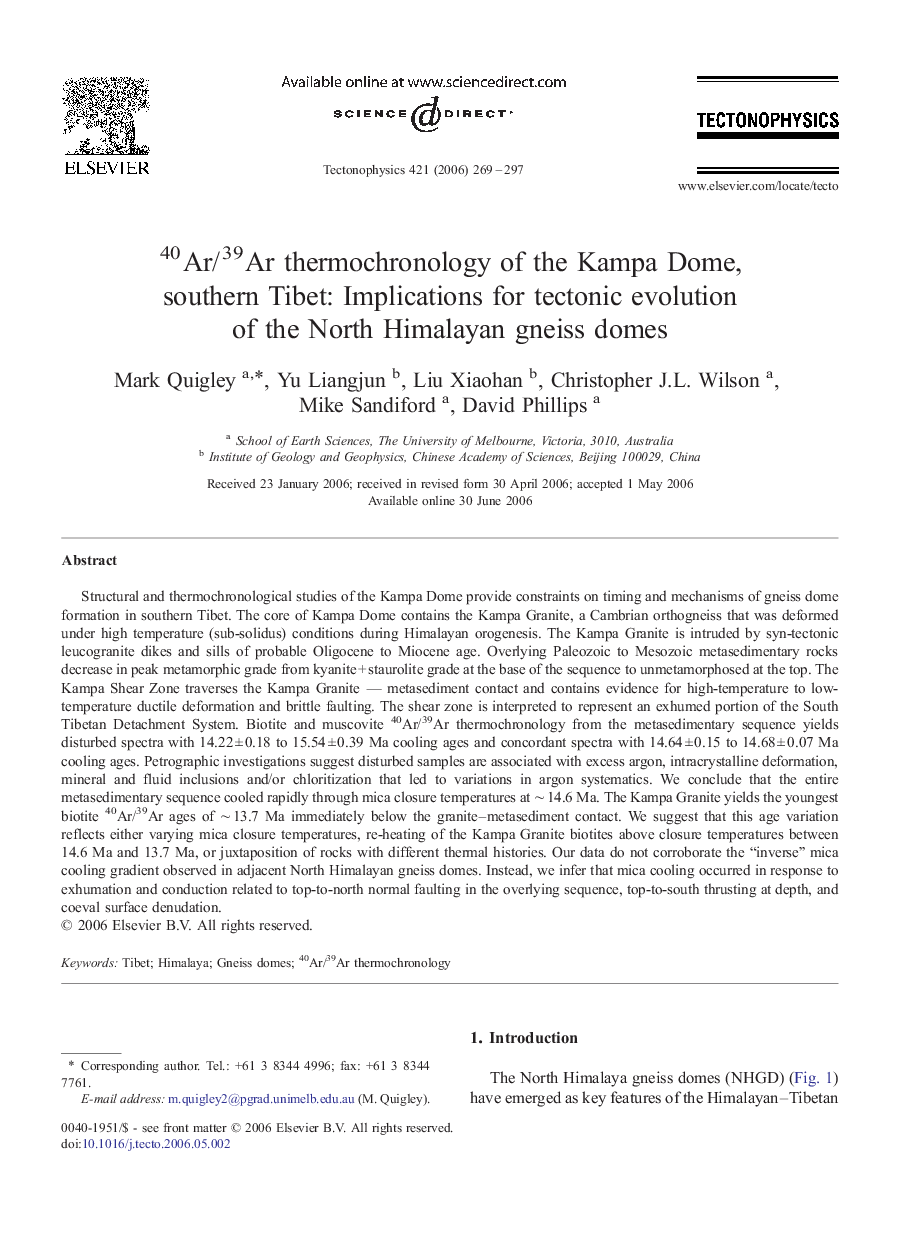| کد مقاله | کد نشریه | سال انتشار | مقاله انگلیسی | نسخه تمام متن |
|---|---|---|---|---|
| 4695081 | 1636951 | 2006 | 29 صفحه PDF | دانلود رایگان |

Structural and thermochronological studies of the Kampa Dome provide constraints on timing and mechanisms of gneiss dome formation in southern Tibet. The core of Kampa Dome contains the Kampa Granite, a Cambrian orthogneiss that was deformed under high temperature (sub-solidus) conditions during Himalayan orogenesis. The Kampa Granite is intruded by syn-tectonic leucogranite dikes and sills of probable Oligocene to Miocene age. Overlying Paleozoic to Mesozoic metasedimentary rocks decrease in peak metamorphic grade from kyanite + staurolite grade at the base of the sequence to unmetamorphosed at the top. The Kampa Shear Zone traverses the Kampa Granite — metasediment contact and contains evidence for high-temperature to low-temperature ductile deformation and brittle faulting. The shear zone is interpreted to represent an exhumed portion of the South Tibetan Detachment System. Biotite and muscovite 40Ar/39Ar thermochronology from the metasedimentary sequence yields disturbed spectra with 14.22 ± 0.18 to 15.54 ± 0.39 Ma cooling ages and concordant spectra with 14.64 ± 0.15 to 14.68 ± 0.07 Ma cooling ages. Petrographic investigations suggest disturbed samples are associated with excess argon, intracrystalline deformation, mineral and fluid inclusions and/or chloritization that led to variations in argon systematics. We conclude that the entire metasedimentary sequence cooled rapidly through mica closure temperatures at ∼ 14.6 Ma. The Kampa Granite yields the youngest biotite 40Ar/39Ar ages of ∼ 13.7 Ma immediately below the granite–metasediment contact. We suggest that this age variation reflects either varying mica closure temperatures, re-heating of the Kampa Granite biotites above closure temperatures between 14.6 Ma and 13.7 Ma, or juxtaposition of rocks with different thermal histories. Our data do not corroborate the “inverse” mica cooling gradient observed in adjacent North Himalayan gneiss domes. Instead, we infer that mica cooling occurred in response to exhumation and conduction related to top-to-north normal faulting in the overlying sequence, top-to-south thrusting at depth, and coeval surface denudation.
Journal: Tectonophysics - Volume 421, Issues 3–4, 1 August 2006, Pages 269–297